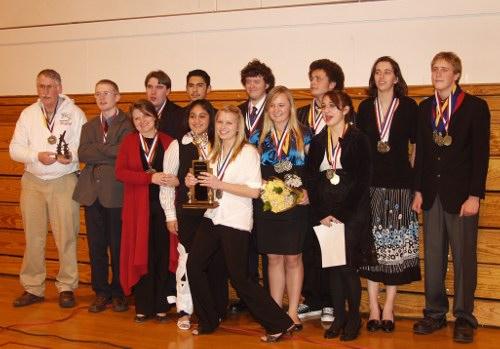- Lake County News reports
- Posted On
REGIONAL: 2-1-1 Community Information Line launches in Mendocino County on '2-1-1 Day'
On Thursday – dubbed "2-1-1 Day” – FIRST 5 Mendocino, Mendocino County Health & Human Services Agency and United Way of the Wine Country announced the countywide launch of the 2-1-1 Mendocino phone service.
By simply dialing 2-1-1, Mendocino County residents can reach a caring, trained specialist, who will match their needs with local community services, such as housing and shelter assistance, senior services, employment assistance, physical and mental wellness, and much more.
Available 24 hours a day, 2-1-1 is also an integral component of Mendocino County’s disaster-response infrastructure.
“Mendocino County is proud to become a 2-1-1 service area that is financially supported by the county and the private sector," said Mendocino County's Assistant Chief Executive Officer Carmel Angelo. "This leveraged public-private partnership is based on the knowledge that 2-1-1 is a vital public communication vehicle through which individuals, families and whole communities gain access to comprehensive and up-to-date health, housing and human service information.”
In California, more than 90 percent of the state is covered by 2-1-1. Nationally, 2-1-1 serves 75 percent of the American public.
In the Bay Area, 2-1-1 was introduced in San Francisco County in early 2006, in Santa Clara County in early 2007, Alameda County in mid 2007, Contra Costa, Napa, Marin and Solano counties in 2008, and Sonoma County in 2009.
Walter Collins, president and chief executive officer of United Way of the Wine Country, said, “Finding help in Mendocino County is now as simple as dialing 2-1-1 – residents can quickly connect with local community services that meet their needs.”
He noted that without 2-1-1, people often make up to nine phone calls before finding the correct service, while many give up before getting the help they need.
Collins added, “2-1-1 is simple, easy-to-remember, toll-free, and available 24-7. Both on a daily basis and in times of disaster, 2-1-1 is the one number people need to know to get help and information."
The 2-1-1 Mendocino effort is a public-private partnership between FIRST 5 Mendocino, Mendocino County Health & Human Services Agency, and United Way of the Wine Country. In addition to these founding partners, 2-1-1 Mendocino is generously supported by PG&E, Bank of America and Community Foundation of Mendocino County.
For everyday needs and in times of disaster, 2-1-1 is an easy-to-remember, toll-free phone number that connects Mendocino residents with local community services, such as food, shelter, counseling, employment assistance, quality child care and more. It's confidential and available 24 hours a day.
The service also serves as a vital link for individuals seeking to volunteer and provide resources to nonprofit organizations.
The service's Web site, www.211mendocino.org, includes a searchable database. There are more than 500 agencies and services in the 2-1-1 Mendocino County databases.
The 2-1-1 service’s role in disaster response and recovery has been important in major events across the country.
The importance of 2-1-1 during disaster was underscored during the October 2007 wildfires in Southern California, where 2-1-1 San Diego call volume peaked at 30,000 calls a day – up from 800 daily – as residents sought information about evacuation sites, road closures, shelters, medical assistance, pet and large-animal care and more.
Calls to Texas’ statewide 2-1-1 system increased from 2,500 to more than 10,000 a day after Hurricane Katrina in 2005, as people sought food, shelter and other assistance. Three weeks after Katrina, more than 170,000 Texas callers had received 2-1-1 assistance.
When a major disaster strikes Mendocino County, 2-1-1 will provide residents with critical information about evacuation routes, food and shelter, as well as support with finding new jobs and permanent housing during long-term recovery.
In the United States, 2-1-1 started in Atlanta in 1997, and currently reaches approximately 198 million people through 2-1-1 systems covering all or part of 41 states.
In 2000, responding to advocacy by the Alliance of Information & Referral Systems (AIRS) and United Way of America, the Federal Communications Commission agreed to designate 2-1-1 as the nationwide three-digit community services telephone number.
In January 2007, both houses of Congress re-introduced the Calling for 2-1-1 Act, which will authorize $250 million to state entities to help implement and sustain 2-1-1.
The California Public Utilities Commission (CPUC) ruled in 2003 that 2-1-1 service would be established on a county-by-county basis, as opposed to deploying a statewide system.
California’s first 2-1-1 service launched on Feb. 11, 2005, in Ventura County. In Southern California, 2-1-1 is available in Ventura, Los Angeles, Orange, Riverside, Santa Barbara, San Diego and San Bernardino Counties.
What's the difference between 2-1-1, 6-1-1, 9-1-1, etc.? The following is a breakdown.
2-1-1: Community services
4-1-1: Directory assistance
5-1-1: Traffic and transit
6-1-1: AT&T repair service
7-1-1: For hearing impaired
8-1-1: Underground utility lines
9-1-1: Life-threatening emergency services
Follow Lake County News on Twitter at http://twitter.com/LakeCoNews and on Facebook at http://www.facebook.com/pages/Lake-County-News/143156775604?ref=mf .

 How to resolve AdBlock issue?
How to resolve AdBlock issue? 









